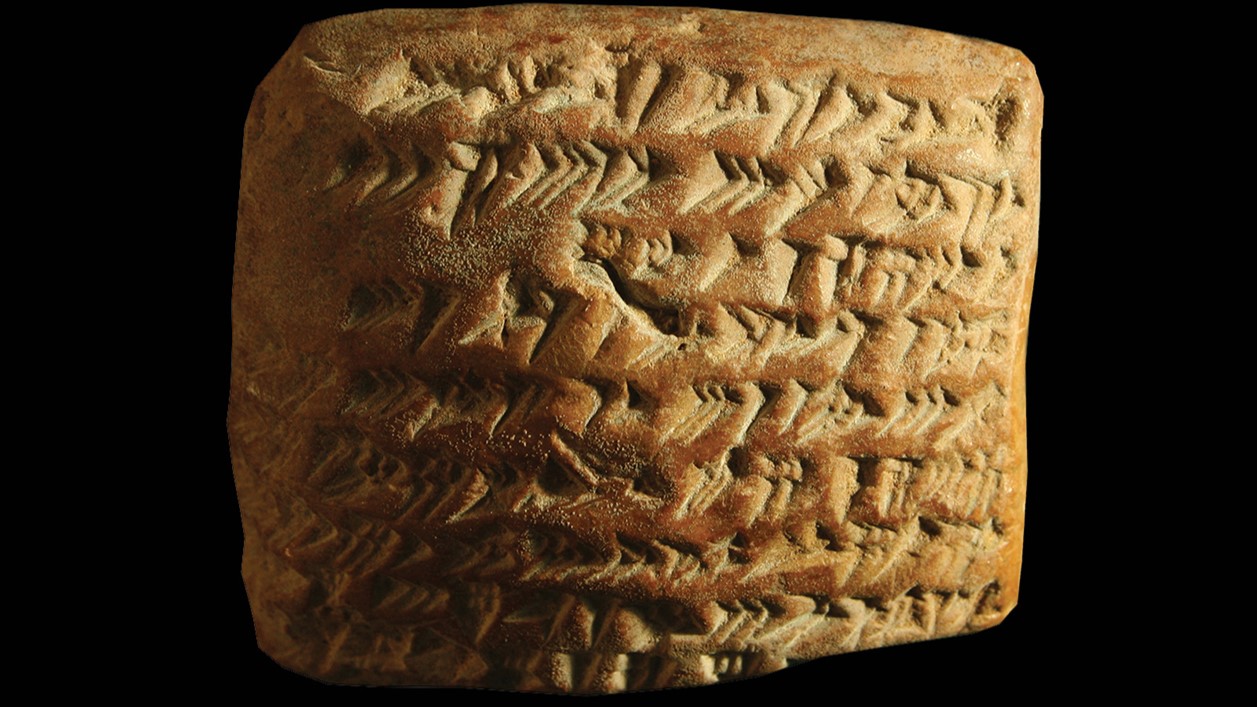
Did you know that ancient Babylonian mathematics laid the groundwork for many modern mathematical concepts? The Babylonians, who thrived in Mesopotamia (modern-day Iraq), developed a sophisticated system that was far ahead of its time. Using a sexagesimal (base-60) number system, they could perform precise calculations, influencing how we measure time today. Their contributions spanned various fields, from algebra to geometry, and even included early forms of the Pythagorean theorem. Remarkably, they recorded their knowledge on clay tablets using cuneiform script, many of which have survived to this day. These ancient mathematicians tackled complex problems, including quadratic equations and astronomical predictions, showcasing their advanced understanding of mathematics.
Key Takeaways:
- Ancient Babylonian mathematics, with its base-60 system and cuneiform script, laid the foundation for modern math. Their advanced concepts and practical applications continue to inspire mathematicians today.
- The Babylonians' innovative methods in geometry, finance, and astronomy showcased their remarkable mathematical skills. Their enduring legacy continues to influence modern mathematics and historical understanding.
The Foundation of Babylonian Mathematics
Ancient Babylonian mathematics laid the groundwork for many mathematical concepts we use today. Their innovations and methods were remarkably advanced for their time.
-
Development of the Sexagesimal System: The Babylonians used a base-60 number system, which is why we have 60 seconds in a minute and 60 minutes in an hour. This system allowed for more precise calculations.
-
Cuneiform Script: They recorded their mathematics using cuneiform script on clay tablets. This pictographic writing system enabled them to document complex mathematical expressions.
-
Positional Notation: Each digit's place in their number system represented a power of 60, making calculations with large numbers easier.
-
Symbolic Representation: Their number system used only two symbols: a wedge-shaped character for numbers 1-59 and a symbol for zero, simplifying their arithmetic.
Advanced Mathematical Concepts
The Babylonians didn't just stop at basic arithmetic. They explored more complex mathematical ideas that were ahead of their time.
-
Fractions and Decimals: They handled fractions and decimals using sexagesimal fractions, essential for their astronomical calculations.
-
Astronomical Contributions: Babylonian astronomers used mathematics to predict celestial events like eclipses and planetary movements with remarkable accuracy.
-
Pythagorean Theorem: They knew and used the Pythagorean theorem to solve problems involving right-angled triangles long before Pythagoras.
Significant Babylonian Tablets
Several clay tablets have been discovered that provide insights into Babylonian mathematics. These tablets cover a wide range of mathematical topics.
-
Babylonian Tablets: Hundreds of clay tablets dating from 1800 to 1600 BC have been unearthed, revealing their knowledge of fractions, algebra, and quadratic equations.
-
Yale Tablet YBC 7289: This tablet contains a diagram of a square with diagonals and provides an approximation of √2 accurate to three significant sexagesimal digits.
-
Plimpton 322: This famous tablet includes calculations involving right-angled triangles and demonstrates their understanding of Pythagorean triples.
Practical Applications
Babylonian mathematics wasn't just theoretical. They applied their knowledge to solve real-world problems.
-
Susa Tablet: This artifact shows their ability to solve complex problems involving fractions and algebra.
-
Tell Dhibayi Tablet: Evidence from this tablet indicates their knowledge of geometry and their ability to solve problems involving areas and perimeters of various shapes.
-
Mathematical Contributions: They made significant contributions to algebra, solving linear, quadratic, and cubic equations, and developed methods for solving systems of linear equations.
Geometry and Arithmetic
Their understanding of geometry and arithmetic was impressive, as evidenced by their exercises and methods.
-
Geometrical Exercises: Tablets contain exercises for calculating areas and perimeters of rectangles, triangles, and circles, demonstrating their grasp of geometric concepts.
-
Division Problems: They used reciprocal tables to perform division, essential for their mathematical operations.
-
Square Roots: They approximated square roots using geometric methods, achieving remarkable accuracy for their time.
Financial Mathematics
The Babylonians also applied their mathematical skills to finance and construction.
-
Cube Roots: Tablets contain tables of cube roots used in various mathematical problems, showing their understanding of cubic equations.
-
Compound Interest: One tablet contains calculations for compound interest, indicating their grasp of financial mathematics.
-
Estimate for π: A tablet gives an estimate for π of 3 1⁄8, close to the actual value of π (approximately 3.14159).
-
Construction Geometry: They applied geometric principles to construction, calculating the area, perimeter, and volume of bricks and cylinders.
Influence and Legacy
Babylonian mathematics had a lasting impact on later civilizations and continues to inspire modern mathematicians.
-
No Evidence of Pyramid Volume Calculation: Despite their advanced abilities, there's no evidence they calculated the volume of pyramids, possibly due to the complexity involved.
-
Influence on Later Civilizations: Their mathematics significantly influenced later civilizations, including the Greeks, who built upon their discoveries.
-
Trade and Cultural Exchange: Their participation in a wider cultural and trade network likely spread their mathematical knowledge to other regions.
-
Symbol for Zero: They used a symbol for zero as a placeholder, represented by two parallel funnels leaning towards the left.
Arithmetic Techniques
Their methods for multiplication, division, and other arithmetic operations were innovative and efficient.
-
Reciprocals: They used reciprocal tables to perform division, with pairs of numbers that multiplied together to give 60.
-
Multiplication and Division: They performed these operations using reciprocal tables, without the concept of zero as we understand it today.
-
Tables of Squares and Cube Roots: Tablets contain tables of squares and cube roots up to 59 and 32 respectively, essential for solving various problems.
Educational and Historical Context
Understanding the educational and historical context of Babylonian mathematics provides insight into their achievements.
-
Geometrical Exercises in Tablets: Many tablets contain exercises for calculating areas and perimeters of various shapes, demonstrating their practical application of geometric concepts.
-
Historical Context: Babylonian mathematics flourished during the Old Babylonian Empire (1900 BC to 1600 BC), a period of significant advancements in mathematics and astronomy.
-
Cultural Significance: Their advanced mathematical system was a testament to their cultural and intellectual achievements, with a lasting impact on subsequent civilizations.
-
Archaeological Discoveries: The recovery of clay tablets has allowed historians to reconstruct their mathematical knowledge and practices.
-
Mathematical Tools: They used various tools, including clay tablets, styluses, and measuring rods, essential for recording and performing mathematical operations.
Educational System and Problems
Their educational system emphasized mathematics and astronomy, contributing to their advanced knowledge.
-
Educational System: Their education system likely played a crucial role in developing their advanced mathematical knowledge.
-
Mathematical Problems in Tablets: Tablets contain a variety of problems, from simple arithmetic to complex algebraic equations, demonstrating their breadth of knowledge and skills.
Geometrical Algebra and Approximations
Their work in geometrical algebra and approximations showcases their innovative approach to mathematics.
-
Historical Sources: Works by A Aaboe, R Calinger, and G Ifrah provide valuable insights into Babylonian mathematics, helping historians reconstruct their practices and achievements.
-
Geometrical Algebra: They solved geometric problems using algebraic methods, an innovative approach for their time.
-
Fermat Problems: They tackled Fermat problems, solving equations with no solutions in the real number system, showing their advanced understanding of algebraic equations.
-
Approximations in Mathematics: They refined approximations, often using geometric methods to approximate irrational numbers like √2 with remarkable accuracy.
Legacy and Influence
The legacy of Babylonian mathematics extends beyond ancient civilizations, continuing to inspire modern mathematicians and historians.
-
Mathematical Cuneiform Texts: Works by O Neugebauer and A Sachs provide detailed insights into Babylonian mathematical cuneiform texts, covering a wide range of topics.
-
Bisectable Trapezia: They calculated bisectable trapezias, trapezoids that can be divided into two equal parts, demonstrating their understanding of geometric shapes.
-
Regular Triangles: They studied regular triangles, with all sides and angles equal, showing their grasp of geometric concepts.
-
Historical Preservation: The preservation of their mathematical knowledge is a testament to their enduring legacy, with their achievements remaining an important part of our cultural heritage.
-
Influence on Modern Mathematics: Their contributions to algebra, geometry, and number theory continue to be studied and built upon today.
-
Educational Significance: Understanding their mathematics is crucial for understanding the historical development of mathematical concepts.
-
Legacy in Modern Times: Their legacy continues to inspire modern mathematicians and historians, reminding us of the ingenuity and intellectual achievements of ancient cultures.
The Lasting Impact of Babylonian Mathematics
Babylonian mathematics was truly ahead of its time. Their sexagesimal system, positional notation, and symbolic representation laid the groundwork for many modern mathematical concepts. They excelled in geometry, algebra, and astronomy, influencing later civilizations like the Greeks. Artifacts like the Yale tablet YBC 7289 and Plimpton 322 showcase their advanced understanding of Pythagorean triples and square roots. Their use of reciprocal tables for division and their approximation of π highlight their practical approach to problem-solving. Even today, their contributions continue to inspire mathematicians and historians. The Babylonians' legacy is a testament to their ingenuity and intellectual prowess, reminding us of the rich history behind the math we use every day. Their work remains a cornerstone in the history of mathematics, bridging ancient wisdom with modern knowledge.
Frequently Asked Questions
Was this page helpful?
Our commitment to delivering trustworthy and engaging content is at the heart of what we do. Each fact on our site is contributed by real users like you, bringing a wealth of diverse insights and information. To ensure the highest standards of accuracy and reliability, our dedicated editors meticulously review each submission. This process guarantees that the facts we share are not only fascinating but also credible. Trust in our commitment to quality and authenticity as you explore and learn with us.


